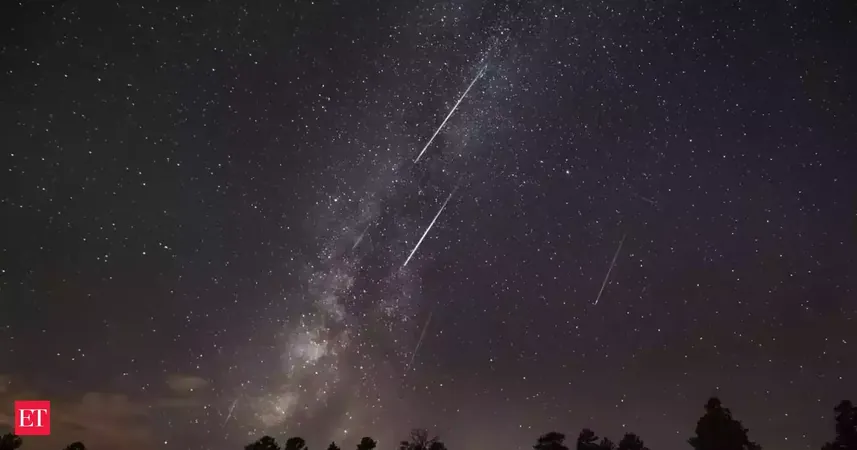
New Study Suggests the Moon Could Be Much Older Than We Thought—And It Changes Everything!
2024-12-21
Author: Jacques
The Genesis of the Moon
The widely accepted theory of the moon's formation describes a colossal collision between Earth and a Mars-sized body over 4.5 billion years ago. This impact resulted in a spray of molten debris, which eventually coalesced to form the moon. This account has successfully explained various geological features observed on the moon, such as its barren landscape, minimal water content, and a paltry iron core.
One striking aspect of this scenario is the moon's proximity to Earth during its early stages, leading to enormous tidal forces that reshaped both celestial bodies. As the moon continues to drift away from Earth—currently at a rate of about two inches per year—scientists have often wondered about the timeline and implications of these early interactions.
A Paradigm Shift in Understanding Formation Dates
According to current research, the oldest lunar rocks brought back by Apollo astronauts are dated around 4.35 billion years, suggesting that the moon formed relatively soon after the solar system formed. However, this conventional view has faced criticism from experts who argue that planetary formation likely occurred earlier, with the bulk of material in the young solar system being collected long before this time frame.
Enter the unique contribution from this trio of researchers: building on an intriguing hypothesis from a 2016 study, they propose that the moon may have experienced extreme tidal heating events as it gradually moved away from Earth. This phenomenon mirrors the intense volcanic activity on Jupiter’s moon Io, which undergoes similar tidal stress from its giant planet.
A New Understanding of Lunar Rock Ages
This tidal heating may have reset the 'clocks' embedded in lunar rocks—those radioactive elements scientists use to determine age—making it appear as though the moon is younger than it may actually be. Thus, the prevalent rock age of around 4.35 billion years could reflect when the moon was reheated rather than when it initially formed.
These revelations provide a satisfying narrative for those who study planet formation, suggesting that the moon's actual formation could predate the rock dating we currently possess.
The Road Ahead
Interestingly, two research groups have independently arrived at similar conclusions, indicating that there may be different models for the moon's story. This divergence highlights the ongoing complexities in lunar research and planetary sciences, as methodologies and interpretations often vary greatly between fields.
Looking forward, the upcoming samples from China’s Chang’e 6 mission will be pivotal. If these new samples fall within the expected 4.35 billion-year age range, it could bolster this new theory. Conversely, discovering significantly older rocks would compel scientists to rethink their hypotheses once more.
This groundbreaking study not only provides a fresh perspective on the moon’s history but also serves as a testament to the power of interdisciplinary collaboration in science. By transcending the barriers of language and methodology, researchers are poised to uncover the true story of our moon’s formation—and, potentially, the evolution of our entire solar system. Stay tuned for what could be one of the most fascinating discoveries in space science!









 Brasil (PT)
Brasil (PT)
 Canada (EN)
Canada (EN)
 Chile (ES)
Chile (ES)
 España (ES)
España (ES)
 France (FR)
France (FR)
 Hong Kong (EN)
Hong Kong (EN)
 Italia (IT)
Italia (IT)
 日本 (JA)
日本 (JA)
 Magyarország (HU)
Magyarország (HU)
 Norge (NO)
Norge (NO)
 Polska (PL)
Polska (PL)
 Schweiz (DE)
Schweiz (DE)
 Singapore (EN)
Singapore (EN)
 Sverige (SV)
Sverige (SV)
 Suomi (FI)
Suomi (FI)
 Türkiye (TR)
Türkiye (TR)